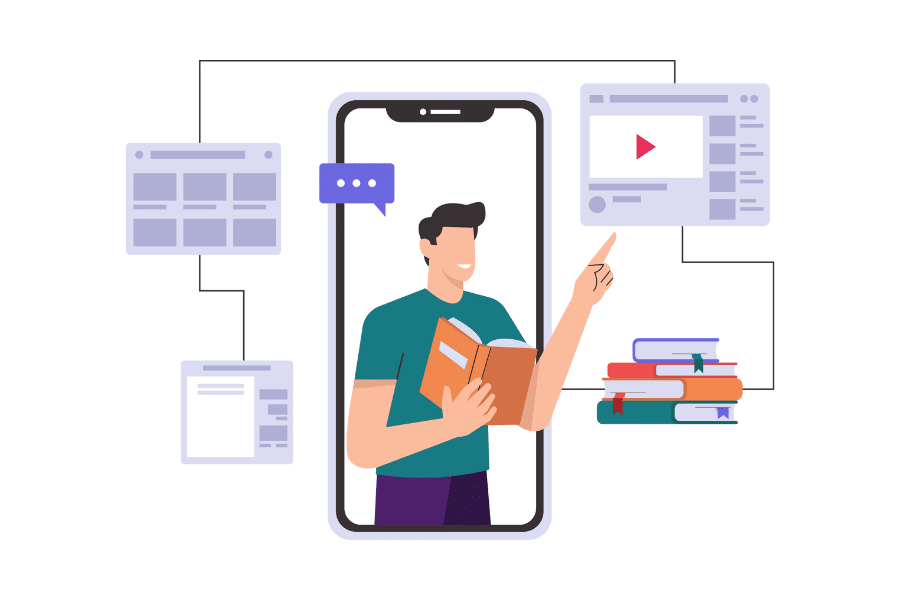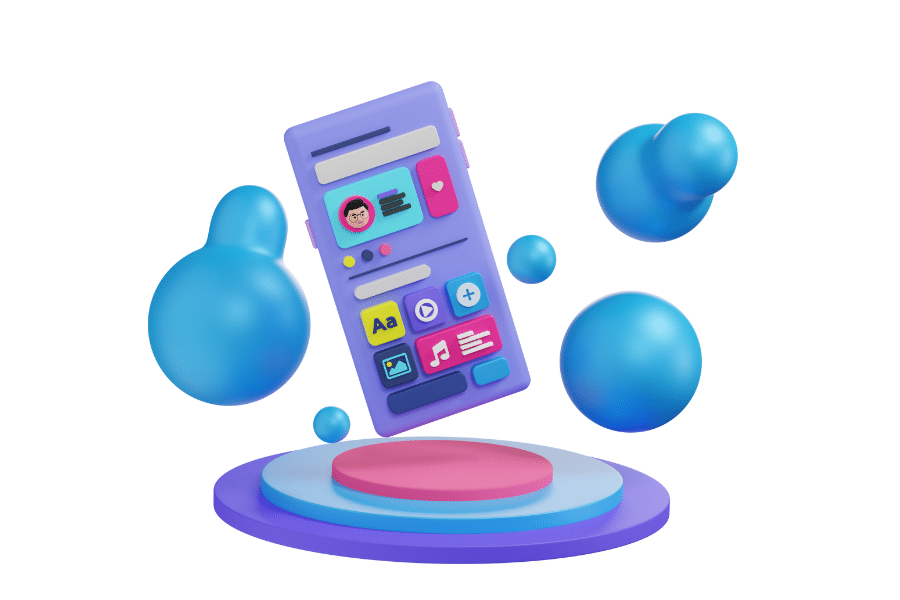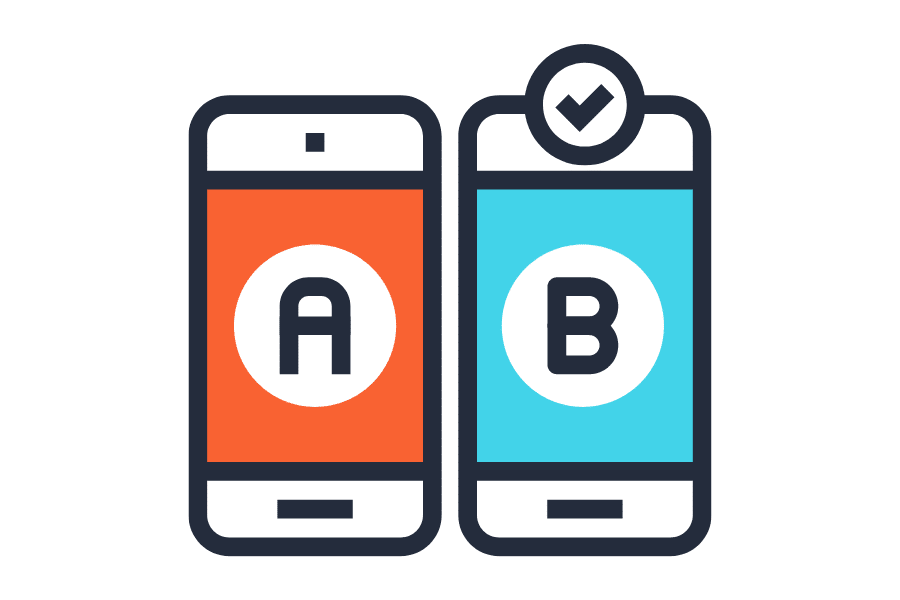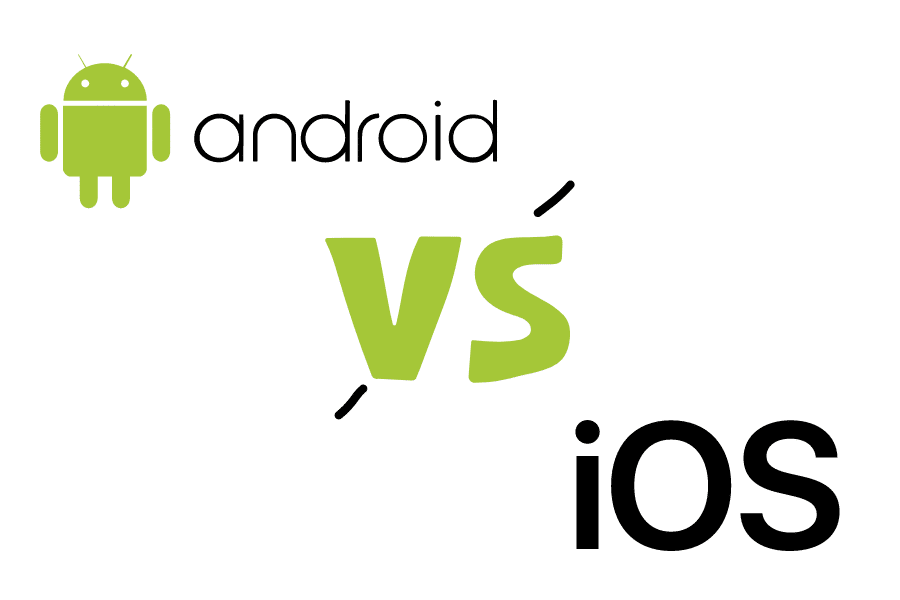How Much Does It Cost to Make an App
It can take time to determine the average cost of developing an app. Business owners must plan and be sure of their expectations when asking, “how much does it cost to develop an app?”. This is always a tricky question to answer due to the variables and complexities involved, but we’ll try our best to give you an idea of the cost to create an app.
In today’s article, we will look at some of these cost factors and compare different aspects of the app development process with each other. So, keep reading if you want to know how much it will cost to build an app!

What is Mobile App Development?
Mobile app development refers to creating software applications specifically designed to run on mobile devices such as smartphones and tablets. You can develop mobile apps for various platforms, including iOS, Android, and Windows.
The mobile app development process typically begins with identifying a business need or opportunity that can address a problem through a mobile app. The process involves conducting market research to identify user needs and preferences and analyzing the competition and industry trends.
Once you establish the business case, the app development team will work on creating the user interface and designing the user experience. User-experience design involves creating wireframes and prototypes to test the app’s usability and functionality.
The coding phase is the next step, where the development team will write the code that powers the app’s functionality. The coding stage requires a range of technical skills, including knowledge of programming languages such as Java, Swift, or Kotlin and proficiency in mobile app development frameworks and tools.
Testing and debugging are critical components of the app development process, as they ensure that the app functions correctly and meets user expectations. Testing involves running a series of tests to identify and resolve bugs or glitches in the app’s code.
Finally, once the app is complete, you can submit it to the app store for deployment. This involves following the app store provider’s specific guidelines and requirements, such as Apple’s App Store or Google Play.
In summary, mobile app development is a complex and multifaceted process requiring diverse skills and expertise. From market research to user interface design, coding to testing, and deployment, the app development process is an intricate and iterative journey that requires patience, planning, and a commitment to quality.
What Is Important To You When Developing An App?
Knowing your priorities when developing an app is very important. Your priorities, needs, and goals will help you make informed decisions that will impact your project. Different priorities, such as cost, speed, or quality, require different trade-offs. Know which of these is most important to you and your users.
For example, if you prioritize cost, you may need to compromise on features or user experience to keep the development budget low. If you prioritize speed, you may need to make sacrifices for quality. On the other hand, if you prioritize quality, you may need to invest more time and resources into testing and refining the app to ensure it meets high standards.
By understanding your priorities and goals, you can make informed decisions and allocate your resources effectively, which will increase the chances of developing an app that meets the needs of your users and achieves your goals.
Factors That Will Influence App Development Cost
When determining the appropriate budget for your mobile app, you should consider several factors and various aspects. These factors can significantly influence the cost of building an app. We will discuss them in detail to better understand the budgeting process.
The Complexity Of The App
The complexity of the mobile app you plan to develop will influence the development cost of your app. The more intricate the app is, the more it will cost to develop. For instance, a straightforward app with essential features like displaying information and contact forms will cost less than a complex app with multiple features such as eCommerce, payment gateway, and social media integration.
Apps with advanced features like Bluetooth, push notifications, and GPS will generally cost more. Incorporating an API that one can use to showcase third-party information or store data in your database for future use will also increase the cost of your app, depending on your specific requirements.
A Content Management System (CMS) may be necessary to manage your mobile app’s content. This feature will enable you to change and adjust your application’s text without submitting a new version to the app stores after every adjustment.

The Platform
The cost of developing a mobile app can vary based on the platform you choose to develop it on. Creating an app for a single platform, like iOS or Android, will cost less. You must increase your budget to develop a mobile app that works on both iOS and Android. Cross-platform development will require creating two separate app versions in different programming languages. However, you do have the option to use an alternative development method to reduce costs. You can develop your apps using HTML5, but this is an older method.
In recent years, new mobile app platforms like Flutter and React Native have emerged that enable the creation of cross-platform apps from a single code base. While this can help lower the initial investment required for app development, it’s important to note that these platforms may still be new, and finding skilled developers may be challenging.
While tempting to select the least expensive option, it’s essential to consider factors such as functionality, user experience, and long-term maintenance costs. Ultimately, the most cost-effective platform will depend on your specific needs and requirements.
The Design Of Your App
The cost of developing a mobile application can also be influenced by the design of your app. A customized app with unique features like user interface, graphics, and animations will typically cost more than a standard-designed app. To ensure that your app design is optimized for various devices and screen sizes, be prepared that your design may take longer.
It’s also worth noting that complicated app designs that use non-standard components can be expensive to develop. This is due to the need for specialized expertise. Apps may require bespoke graphics and animations in many cases, leading to additional costs.
To save on development costs, keep your app design simple. You can utilize standard components and minimize the use of bespoke graphics and animations. By doing so, you will lower the development cost of your app while still maintaining a good level of user experience.

The Team That Will Develop Your App
The cost of developing a mobile app can vary based on factors such as the size and expertise of the development team, their location, and more. A larger group of experienced developers will charge more than a small team with less experienced developers because experienced developers command higher salaries.
Developers in certain regions, such as the United States or Western Europe, will be more expensive than the cost to develop an app in India and other parts of the world. This is mainly due to differences in the cost of living and wage rates in different regions.

*You can learn more about these salary facts on Salary.com
It’s important to note that choosing a less experienced team based on cost can be a risky decision. Developers with little experience may fully understand your requirements, which could cost you time and money in the long run. On the other hand, hiring a highly skilled and experienced team can increase your chances of getting the desired results, but it may also come with a higher price tag.
To strike a balance between cost and expertise, it’s essential to carefully evaluate potential development teams and their experience, skill sets, and track record. Doing so lets you choose a team capable of delivering the features and functionality you need without overpaying for unnecessary resources.
The Testing and Deployment Of Your App
Mobile app development involves several critical phases that can impact the cost and success of the app. Testing and deployment are two such phases that require careful attention. After the development phases of your app, you need to test your app. This is to make sure that it is of good quality. You must test your app on multiple devices, operating systems, and networks. This can naturally lead to additional development costs. Similarly, deploying the app to app stores and ensuring it complies with their guidelines while meeting the security and privacy standards can also add to the development cost.

In-house VS Agency App Development
When developing a mobile app, businesses have two options: in-house development or outsourcing to an agency.
In-house app development involves building the app within your organization with the help of an internal team of developers. On the other hand, outsourcing to an agency means partnering with an external company specializing in app development to build your app. Both options have their pros and cons.
In-house app development gives businesses greater control over the development process, which can lead to more customized solutions and a better understanding of the app’s functionality. However, it can also be more expensive and time-consuming.
Outsourcing to an agency can be more cost-effective and faster, providing access to a larger talent pool with specialized expertise. However, businesses may have less control over the development process and may have to sacrifice some level of customization.
Ultimately, the decision between in-house and agency app development depends on your needs, resources, and priorities.
Native VS Hybrid App Development
Determining the cost of building an app depends on the type of app you plan to create. There are two main options: native app development or hybrid app development.
Native app development requires building an app using platform-specific programming languages and tools. This approach allows developers to take advantage of the platform’s full capabilities, such as the camera, GPS, and push notifications, resulting in a more seamless and optimized user experience. However, developing separate apps for each platform can also lead to increased maintenance costs and longer development cycles. Each app must be updated and tested separately for new features or bug fixes.
Hybrid app development allows you to create an app that can run on multiple operating systems. This option is generally less expensive than native app development.
However, hybrid apps can have some downsides, such as unstable performance, difficulties with user experience depending on the device used, and technical limitations. Another potential downside of hybrid app development is that it may need help to take full advantage of each operating system’s unique features and capabilities, such as hardware sensors or software frameworks.
Also, hybrid apps may require more maintenance and updates than native apps, as you must optimize them for multiple platforms and operating system updates. Due to these drawbacks, many companies opt for native app development.

Android VS iOS App Development
Android and iOS are the most widely used mobile operating systems worldwide. If you plan to develop a mobile app, consider developing it for one of these platforms.
You can develop an Android app while also developing an iOS app. To minimize risk and expenses, you can create an app for just one platform, such as iOS or Android.
When it comes to the cost of building an app, the prices are similar for both platforms since the development timeline is almost identical. If you have a larger budget, consider developing two apps simultaneously and releasing them on the market.

The Approximate Cost Of Building Different Mobile Apps
The cost to build a social media app like Instagram

To effectively manage the significant amounts of data involved in social interactions and information sharing, social networking apps such as Instagram prioritize these aspects. As a result, it is essential to design these apps with this purpose in mind.
Some critical features that social networking apps must include are profile building, media publishing for sharing images and videos, social interactions like commenting and liking posts and push notifications. These features facilitate user engagement and enhance the overall user experience.
Developing a social networking app can be a significant investment, with costs ranging from $60,000 to $300,000.
The cost to build a ride-hailing app like Uber

Uber-like ride-hailing applications typically consist of three separate applications: two mobile apps catering to passengers and drivers, respectively, and a web-based admin panel. These applications boast several key features. The features include; SMS and push notifications, payment integration, geolocation services, and advanced routing and route optimization capabilities.
Developing a ride-hailing app with similar features may cost around $50,000.
“The cost of developing an app according to Velvetech.com can be anywhere from $12 000 – $ 500 000. It all depends on your size, needs, and development plan.”
The Unknown Costs of Mobile App Development
Developing a mobile app requires a significant investment of time and resources, and while the development process itself is a considerable expense, it is not the only one to consider. There are a variety of hidden costs associated with developing an app that may take time to be immediately apparent.
Here are five of the most common hidden costs you may encounter during the process.
App Maintenance And Upgrades
While the release of an app is a milestone, it’s not the end of the journey. App maintenance and upgrades are crucial to keep your app functional and relevant in the market. Maintenance and updates are required to respond to user feedback, optimize code, fix bugs, and ensure compatibility with new technologies and operating systems. According to Outsystems, app maintenance costs during the first year after launch can be as much as 50% of the development costs, with subsequent years costing 25% and 15-25% for the second year and each following year, respectively.
Infrastructure Expenses
Infrastructure expenses are essential for hosting the app on servers, ensuring scalability, and handling traffic spikes. These expenses include server costs, data storage, content distribution networks, integrations, development tools, and load-balancing devices.
Operating Expenses
Operating expenses are necessary to enhance app functionality and user experience. Subscribing to various services and third-party integrations, such as push notifications, SMS notifications, social media integration, geolocation, and payment gateways, can be expensive, depending on the number of services required.
App Security
App security is critical to protect user data and intellectual property rights. Ensuring app security may increase the overall cost of developing an app, but it is a worthwhile investment in the long run. To ensure the app is secure, it is essential to inquire about the development team’s security practices and discuss firewall protection, secured transactions, and other critical issues.
Patenting The App
Patenting the application is essential to protect intellectual property rights and defend against false accusations of theft. During the patent application process, define what makes the app unique, specify the aspects of the app that you want to claim ownership and provide a visual representation of the app. The average cost of app patenting varies depending on the country. The type of mobile app can also play a role.
Developing an app involves hidden costs beyond the development process. Knowing these hidden costs can help you budget and plan more effectively for creating a successful app.
Is It Possible To Create A Mobile App For Free?
It is possible to create a mobile app without spending any money. With the availability of numerous app-building platforms and tools available on the internet, making your mobile app free has become easier than ever before. One platform you can use for free is Appsgeyser, which offers an online app-building service.
*Learn How To Build An App With Appsgeyser
However, it’s essential to remember that using a free app-building platform may have some limitations. For instance, you may need help accessing certain advanced features and functionalities or customizing the design of your app fully. Additionally, branding options may also be limited.
Therefore, evaluating your requirements carefully before deciding which option is best for you is crucial. Ultimately, the decision depends on your specific needs and preferences. If you have a more complex or customized app idea, consider hiring a professional app developer to build it for you.
Interesting Facts About Mobile App Development
When it comes to app development, it’s not just the development cost that matters. You need to remember post-launch marketing and maintenance costs, economic conditions, the evolution of the mobile app market, and more.
We’ve compiled a list of interesting facts to shed more light on the average cost of app development.
According to the Business of Apps, you need a budget of at least $10,000 to plan your app’s go-to-market strategy.
The cost-per-install (CPI) is a metric used to calculate the marketing expenses app marketers pay to engage one user. During the first year after launch, app marketing can cost up to half the development cost. In 2021, the iOS CPI was $3.6 per app install, while the Android CPI was $1.22.
The average cost of maintaining software and applications is approximately 15-20% of the development cost. According to an Outsystems survey, developing over 80% of mobile apps takes around three months, and 40% of applications take six months or more to grow.
Market Research Future predicts that the mobile app development market will grow at a compound annual growth rate of at least 23.80% over the next eight years.
According to Globe Newswire, the global mobile applications market is worth US$112.6 billion and is expected to exceed US$307 billion by the end of 2031.
Given the forecasts on the list, the global mobile app market will continue to evolve rapidly over the next decade, suggesting that app development costs will not decrease. If you have contemplated creating your mobile platform, now is the time to act.
The Bottom Line
Developing an app can be an overwhelming experience for anyone. There are so many things that you have to consider, especially when it comes to the cost. In this article, we have explored the potential factors that can affect the price of app development, the impact cost and budget can have on the project timeline, and more.
In summary, developing an app can be expensive, with the cost of development varying depending on various factors. The cost depends on a wide range of factors, such as the app’s complexity, functionality level, design requirements, and platforms on which it is developed. High-quality app development can cost anywhere from a few thousand dollars to over $500,000.
The development cost depends on the development team’s location, with developers in certain areas commanding higher fees than others. The experience and expertise of the development team can also play a significant role in determining the development cost.
When considering the cost of app development, it is essential to understand your budget and your project’s requirements clearly. Consider the potential return on investment the app may generate, which can help justify the development cost.
To make an informed decision for your app development project, you should take time to weigh your options to maintain a flexible and appropriate budget. If you do this, you will ensure that your app is developed to the highest quality possible while remaining within your financial means.
